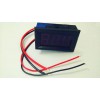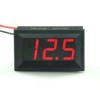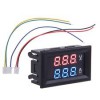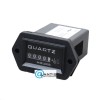Shopping Cart
0 item(s) - R0.00-
- - Amplifier Module
- - Arduino Compatible - Development Platform
- - Arduino Compatible Modules & Shields
- - Breakout Boards
- - Cables / Hookup wires
- - Displays
- - Enclosures
- - Magnets
- - Motors & Gears
- - Nuts & Bolts
- - Peltier Cooler Heater
- - PIR
- - Sensors
- - Servo's & Motors
- - Solar
- - Stand Alone Modules
- - Stepper Motor & Drivers
- - USB Programmers & Converters
- - Voltage Regulator & Chargers
- - RC Hobby Parts
-
- - AC DC Cooling Fans
- - Cable Ties
- - Day/Night Switches
- - Electrical Plugs & Connectors
- - Gate Remotes & Receivers (Universal)
- - Heat Shrink Sleeves
- - Insulation Tape
- - Lighting & Globes
- - Mains Power Cables
- - Power Supplies & AC/DC Adaptors
- - Security Lights LED Type
- - Solar Charge Controllers
- - Surge Protectors
- - Timers
-
- - Battery Holders
- - Breadboard
- - Bridge Rectifier
- - Buzzers
- - Capacitors
- - Crystals
- - Diodes
- - Electromechanical
- - Fuses
- - Headers
- - Heat Sinks
- - IC Sockets HQ
- - IC Sockets TIN
- - IC's --> Semiconductor
- - Inductors
- - Laser Units (CD Players)
- - Microcontrollers & CPU's
- - Opto Electronics
- - Panel Meters And Displays
- - Passive Components
- - Pilot Lamps & Fittings
- - Plugs & Sockets
- - Resistors
- - Rotary Potentiometer
- - Semiconductors
- - Sensors
- - Switches
- - Transformers
- - TVS Diodes
- - Veroboard / Stripboard
- - Voltage Regulators
- - Zener Diode
Panel Meters And Displays
Liquid-crystal display (LCD) is a flat panel display, electronic visual display, or video display that uses the light modulating properties of liquid crystals. Liquid crystals do not emit light directly.
The LCD screen is more energy efficient and can be disposed of more safely than a CRT. Its low electrical power consumption enables it to be used in battery-powered electronic equipment. It is an electronically modulated optical device made up of any number of segments filled with liquid crystals and arrayed in front of a light source (backlight) or reflector to produce images in color or monochrome.
Advantages:
Very compact and light.
Low power consumption.
Very little heat emitted during operation, due to low power consumption.
No geometric distortion.
The possible ability to have little or no flicker depending on backlight technology.
Usually no refresh-rate flicker, because the LCD pixels hold their state between refreshes (which are usually done at 200 Hz or faster, regardless of the input refresh rate).
Is very thin compared to a CRT monitor, which allows the display to be placed farther back from the user, reducing close-focusing related eye-strain.
Razor sharp image with no bleeding/smearing when operated at native resolution.
Can be made in almost any size or shape.
No theoretical resolution limit.
Can be made to large sizes (more than 24 inches) lightly and relatively inexpensively.
Ex Vat: R113.04
Ex Vat: R60.78
Ex Vat: R104.35
Ex Vat: R173.91
Ex Vat: R260.00
Ex Vat: R130.43
Ex Vat: R117.39
Ex Vat: R121.74
Ex Vat: R513.04





-100x100.jpeg)

-100x100.jpg)
-100x100.jpg)
-100x100.jpg)





-80x80.jpg)















